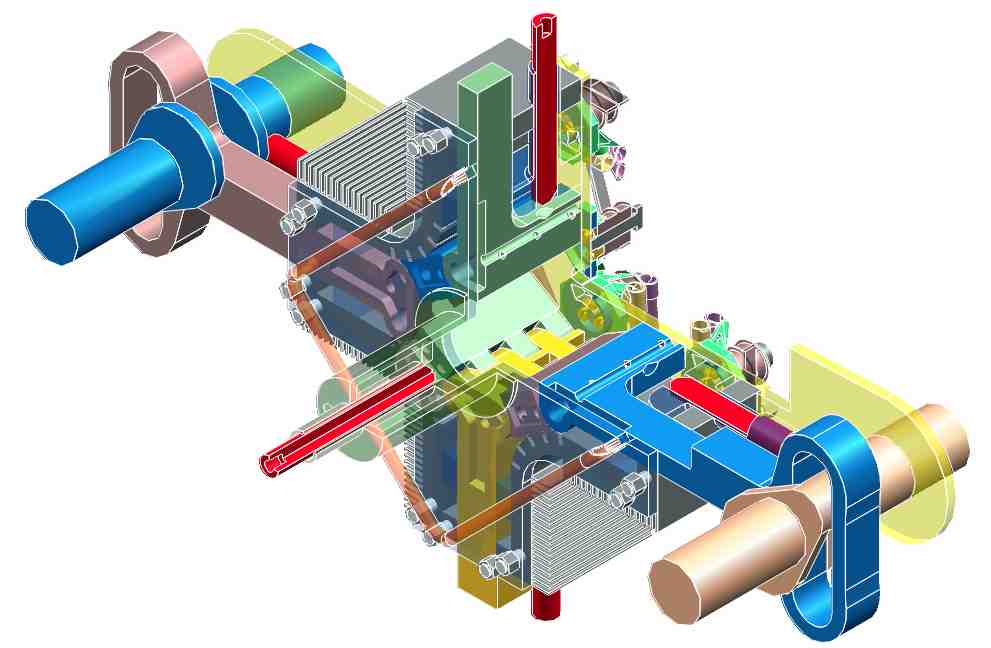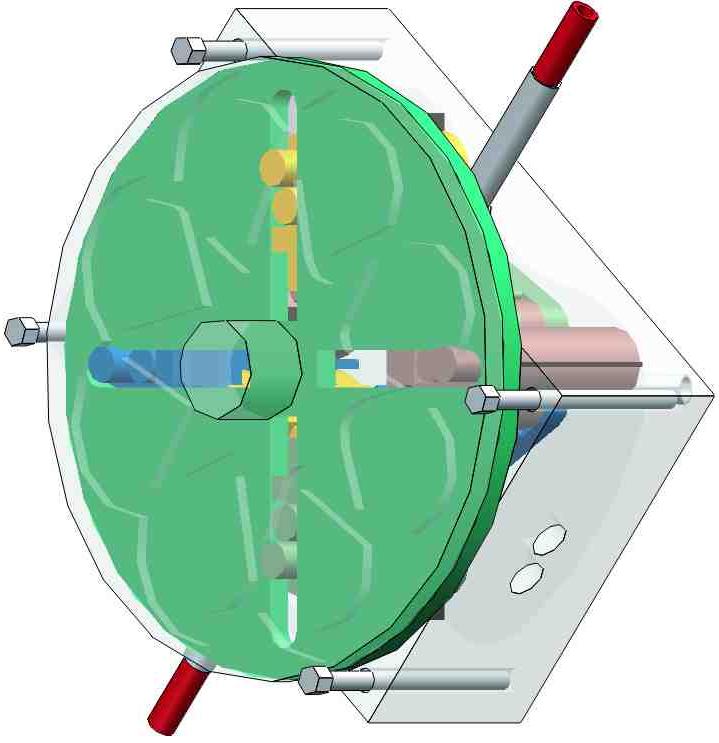1.
How to encourage the compactness?
The compactness of the motor results from its capacity to
inhale a very big volume of fresh air by revolution of the
first shaft
actuated in continuous rotation by gases under pressure.
One has the following axes of improvement, by order of decreasing
relevance :
- to use the TWO faces of the parts
sweeping volumes in the room of combustion : thus a moving
part must serve simultaneously
to reduce the volume of any room of combustion and to increase the
one of another immediately neighboring room
- to sweep proportional
volumes to the square of the characteristic dimension of the engine,
so that to double this dimension corresponds to quadruple the output
power (to sweep volumes proportional to the cube would impose too much
complex kinematics)
- to create a kinematics adapted in the goal of conversion of the
alternated sweeping motions into continuous rotation : more
precisely, the kinematics must give a lot of cycles in the rooms to
achieve a complete rotation of the first
continuously rotating shaft.
- to encourage the
overfeeding of the engine
which will integrate a system to manage the compression ratio
and have big sections of openings /closings of room of
combustion.
.
- to reduce the size of
the parts : but this aspect requires the use of expensive
materials to resist the thermomechanical constraints.
2. How
to permit an appropriate maximal power?
The usual commercial motors deliver about 70 HP by liter of combustion.
It will be necessary to size the parts of the engine so that 1 liter of
air is inhaled on 2 revolution of the first rotating shaft at outside
normal conditions of temperature and pressure (1 Bar, 20°C).
3. How
to make vary the output power by sufficiently small steps?
The most intuitive idea is to have numerous identical rooms. One can
also consider having different combustion rooms on the same engine,
that by combination, can reconstitute a whole range of capacities with
very near steps from one to another one.
The POGDC engines,
of preference in combination with MPRBC engines, offer a
capacity nearly continuously variable.
4. How
to get an optimized four times cycle ?
- While designing a cyclic
variation of the volume of every room between a minimal
volume and a maximal volume
- While finely
piloting the displacement
of the moving parts in relation to the angle of the
rotating shaft.
- While playing on the
advances / delays for closings / openings of the valves of
exhaust and admission
5.
How to permit a high liberty of variable wedging for the
valves?
The topic is very vast and
this link
after an exposition of "the state of the art", retail some possible
solutions.
6.
Why to only use technologies that have given their proofs?
The question is paradoxical as regard as an innovating approach
presently followed by
SYCOMOREEN.
Actually,
an innovation
has sense only if it is feasible
for a reasonable cost, that it is robust in the time, and that it
is able to base its success on the traditional know-how of the
industrial sector in order to permit its
manufacturing on
already finacially absorbed industrial tools and its penetration on the
market that likes to be surprised, but doesn't like to be rushed.
Thus, the designed parts of the engine are made of standard
steel
(7800 kg/m3 and 250 MPas of elastic limit, Module of Young 210 GPas),
usinables, cutable, moldable and mountables by classic and
mastered means, and whose costs are reasonable for any SME of
mechanics, and
a
fortiori
for factories of large industrial groups achieving big
money savings by increasing more and more their series of
parts..
The motors must also present known structures, validated on the
previous motors, in particular in their precision of assembly and their
ability to be tight between the rooms.
7.
How to make continuously vary
the volumetric ratio ?
The key-point is the volume of the room at the top dead center
:
the top dead volume (TDV) can actually regulate the compression rate
with only two reliable methods :
- regulation by increasing of the
TDV: Very small nominal TDV and an additional regulating
is freeing progressively the volume in the room of combustion
- regulation by
decreasing of the TDV:
Relatively big nominal TDV and an additional regulating piston is
occupying progressively the volume in the room of combustion
Other techniques are foreseeable as the toppling over of breech or the
variation of length / eccentricty of the crankshaft, but they have the
disadvantages to couple all rooms of combustion and to require very
heavy kinematics which is sometimes little reliable...
























